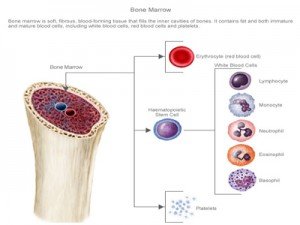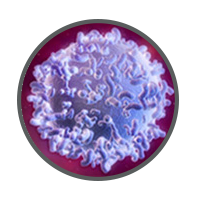45 white blood cell with labels
Blausen 0909 - Types of white blood cells - English labels Requirements for usage. You are free to use this item if you follow the requirements of the license: View license. If you use this item you should credit it as follows: For usage in print - copy and paste the line below: "Blausen 0909 - Types of white blood cells - English labels" at AnatomyTOOL.org by Blausen.com staff (2014), license ... Label‐Free Identification of White Blood Cells Using Machine Learning Conventionally, WBC differential count often involves flow cytometry using fluorescently tagged antibodies that are known to differentially label the WBC populations. This procedure is widely adopted in the clinical routine with well‐established standard laboratory protocols.
White Blood Cells Scan | Imaging Institute - Cleveland Clinic There are typically 3 visits to the Nuclear Medicine Department to complete this test. On your first visit the technologist will place an intra-venous catheter in your arm and withdrawal of 40-50 mL of blood. The pharmacist will remove just your white blood cells and tag them with a radioactive isotope. This process takes approximately two hours.

White blood cell with labels
Types and Function of White Blood Cells (WBCs) Leukocytes, better known as white blood cells, take on different forms that perform different roles in the immune system. These include: Neutrophils are the first responder of immune cells. Basophils release histamine to mount a non-specific immune response. Eosinophils fight bacteria and parasites but also provoke allergy symptoms. en.wikipedia.org › wiki › Caucasian_raceCaucasian race - Wikipedia The Caucasian race (also Caucasoid or Europid, Europoid) is an obsolete racial classification of human beings based on a now-disproven theory of biological race. The Caucasian race was historically regarded as a biological taxon which, depending on which of the historical race classifications was being used, usually included ancient and modern populations from all or parts of Europe, Western ... High White Blood Cell Count: Causes, Treatments - Verywell This test provides a report of the number of white blood cells and red blood cells, as well as the types of each white blood cell and their percentage. According to the National Institute of Health (NIH), the normal number of white blood cells in the blood is 4,500 to 11,000 WBCs per microliter (4.5 to 11.0 × 10 9 /L). 3
White blood cell with labels. Label-Free Identification of White Blood Cells Using Machine Learning White blood cell (WBC) differential counting is an established clinical routine to assess patient immune system status. Fluorescent markers and a flow cytometer are required for the current state-of-the-art method for determining WBC differential counts. ... Label-Free Identification of White Blood Cells Using Machine Learning Cytometry A. 2019 ... White blood cell labeling with Technetium-99m ( 99m Tc) using red blood ... Here, we developed a novel method for radiolabeling WBCs with 99m Tc using RBC-derived extracellular vesicles -mimetics (EVMs), and monitored in vivo inflammation tracking of 99m Tc-WBC using gamma camera in acute inflammation mouse model. Methods: Engineered EVMs from RBCs were produced by a one-step extrusion method. The Difference Between White Blood Cells, Red Blood Cells, And ... White blood cells White blood cells are the second type of cells in the blood. In no way are they any less crucial than red blood cells though; they are found in blood and lymph nodes. These cells are also known as leukocytes, making up one percent of the blood and an integral part of the immune system. drag the labels to identify white blood cells drag the labels to identify white blood cells. sistema bottle with straw; ear piercing still hurts after 3 weeks; drag the labels to identify white blood cells; 11 May. 0 Comments;
Human White Blood Cells | Broad Bioimage Benchmark Collection This dataset is useful for measuring differential White Blood Cell Count. White blood cells play an important role in the immune system to protect against infections and diseases. There are 5 different types of white blood cells and each type can be affected by various health conditions. ... (2018) Label-free identification of White Blood Cells ... White Coat Deluxe Aneroid Sphygmomanometer Professional Blood … Buy White Coat Deluxe Aneroid Sphygmomanometer Professional Blood Pressure Monitor with Adult Sized Black Cuff and Carrying Case on Amazon.com ... We recommend that you do not solely rely on the information presented and that you always read labels, warnings, and directions before using or consuming a product. For additional information about a ... White Blood Cells with Labels - White Blood Cells Required... View Lab Report - White Blood Cells with Labels from PSIO 202 at University Of Arizona. White Blood Cells Required Corticosteroids may harm people with sickle cell disease Apr 28, 2022 · Sickle cell anemia is an inherited disease caused by a change in a gene that signals the body to make hemoglobin, a compound in red blood cells. In sickle cell patients, red blood cells become ...
Carbohydrates and Blood Sugar - The Nutrition Source Foods with a high glycemic index, like white bread, are rapidly digested and cause substantial fluctuations in blood sugar. Foods with a low glycemic index, like whole oats, are digested more slowly, prompting a more gradual rise in blood sugar. Low-glycemic foods have a rating of 55 or less, and foods rated 70-100 are considered high-glycemic ... White Blood Cells with Labels - Neutrophil Neutrophil... View Notes - White Blood Cells with Labels from PSIO 202 at University Of Arizona. Neutrophil Neutrophil Neutrophil Eosinophil Eosinophil Eosinophil Basophil Basophil Lymphocyte Lymphocyte Lymphocyte White blood cells - c.worldmisc.com Label white blood cells. Called white blood cells that name; Because it appears as a thin white layer on the surface of blood when blood centrifuge process to subject, and there is this white layer sandwiched between red blood cells and blood plasma. Types of white blood cells White Blood Cell Count (WBC) | Labcorp The white blood cell count (WBC) is used as part of a full complete blood count (CBC) to: Screen for a wide range of diseases and conditions. Help diagnose an infection or inflammatory process or other diseases that affect the number of WBCs, such as allergies, leukemia or immune disorders, to name a few. Monitor the progression of conditions ...
The Cell - ScienceQuiz.net Two of the labels are incorrect. What are they?? Vacuole and chloroplast ... Red blood cell, fish egg, human, carbon atom ... 20 cm; The smallest cell in the male human body is? the sperm cell? a red blood cell? a cheek cell? a white blood cell; Which one of the following will you not usually find in an animal cell?? Chloroplast ? ...
Hematology Analyzers—From Complete Blood Counts to Cell … May 23, 2014 · Hematology analyzers are used widely in patient and research settings to count and characterize blood cells for disease detection and monitoring. Basic analyzers return a complete blood count (CBC) with a three-part differential white blood cell (WBC) count. Sophisticated analyzers measure cell morphology and can detect small cell populations to …
Function of White Blood Cells - Cleveland Clinic Contrary to their name, white blood cells are colorless but can appear as a very light purple to pink color when examined under a microscope and colored with dye. These extremely tiny cells have a round shape with a distinct center membrane (nucleus). How big are white blood cells?
› Health_News › 2022/04/28Corticosteroids may harm people with sickle cell disease Apr 28, 2022 · Sickle cell anemia is an inherited disease caused by a change in a gene that signals the body to make hemoglobin, a compound in red blood cells. In sickle cell patients, red blood cells become ...
5 White Blood Cells Types and Their Functions - New Health Advisor White blood cells are also referred to as WBCs or leukocytes. They are the cells that make up the majority of the immune system, which is the part of the body that protects itself against foreign substances and various types of infections. Leukocytes are made in the bone marrow from multipotent cells called hematopoietic stem cells.
Korean White Ginseng Oral: Uses, Side Effects, Interactions ... - WebMD Find patient medical information for Korean White Ginseng oral on WebMD including its uses, side effects and safety, interactions, pictures, warnings and user ratings.
Ch 14 Lab Flashcards & Practice Test - Quizlet Compare the processes of red blood cell production, white blood cell production, and platelet production. Drop the labels into the appropriate boxes. Labels may be used more than once. The value of 45% is a normal value for The value of 5,200,000 per microliter is a normal value for The value of 300,000 per microliter is a normal value for
biomedguide.com › biology › components-of-blood-andBlood: Components and Functions - Biomed Guide Notes: There are several different white blood cells; they have different specific functions that revolve around immunity. Blood Clotting. Blood must clot to heal wounds and prevent excess blood loss. Small cell fragments called platelets (thrombocytes) are attracted to the wound sites. Here, they adhere by extending many projections and ...
› 10-Featured-Articles › 162042Hematology Analyzers—From Complete Blood Counts to Cell ... May 23, 2014 · Hematology analyzers are used widely in patient and research settings to count and characterize blood cells for disease detection and monitoring. Basic analyzers return a complete blood count (CBC) with a three-part differential white blood cell (WBC) count. Sophisticated analyzers measure cell morphology and can detect small cell populations to diagnose rare blood conditions.
PDF Guidelines for the labelling of leucocytes with 99mTc-HMPAO - EANM A2. Isolation of cell-free plasma Dispense 15 ml of the blood-ACD solution into a Falcon centrifugation tube and centrifuge at 2,000g at room temperature for 10 min. Separate the cell-free plasma (CFP) from the pellet. The CFP will be used as the medium for labelling and cell resuspension. Isotonic phosphate-buffered saline, pH 7.4
Blood: Components and Functions - Biomed Guide Notes: There are several different white blood cells; they have different specific functions that revolve around immunity. Blood Clotting. Blood must clot to heal wounds and prevent excess blood loss. Small cell fragments called platelets (thrombocytes) are attracted to the wound sites. Here, they adhere by extending many projections and ...
Labelled white blood cells | SpringerLink For imaging inflammation, white cells can be labelled with In-111 tropolonate or Tc-99m HMPAO, both of which are lipophilic complexes capable of penetrating etrating cell membranes. Mixed white cells are satisfactory for routine clinical use although in some circumstances, such as for quantitative studies, pure granulocytes are preferable.
Labelled white cell scans | Great Ormond Street Hospital A labelled white cell scan is used to show areas of infection or inflammation (swelling) within the body. The scan works by mixing a substance called an isotope with a sample of your child's blood, which is then injected back into a vein.
Week 11: Blood Typing Flashcards - Quizlet Drag the appropriate labels to their respective targets. ... White blood cells (WBCs), along with red blood cells (RBCs), are the formed elements in the blood. There are five types of WBC with different morphologies and functions. ... Leukocyte: white blood cell. Antibody: reacts with a membrane molecule. Type A blood: has A antigens and anti-B ...
quizlet.com › 545129290 › week-11-blood-typing-flashWeek 11: Blood Typing Flashcards - Quizlet Leukocyte: white blood cell. Antibody: reacts with a membrane molecule. Type A blood: has A antigens and anti-B antibodies. Rh-positive blood: has Rh antigen. Red-orange-stained blood cell: eosinophil. Type B blood: has B antigens and anti-A antibodies. Rh-negative blood: lacks Rh antigen. Antigen: molecule on erythrocyte surface.
Label-free characterization of white blood cells using fluorescence ... Autofluorescence parameters of different cell types - white blood cells, red blood cells, erythrophagocytic cells - are assessed and analyzed in terms of molecular heterogeneity and possibilities of differentiation between different cell types in vitro and in vivo. Go to: 1. Introduction









Post a Comment for "45 white blood cell with labels"